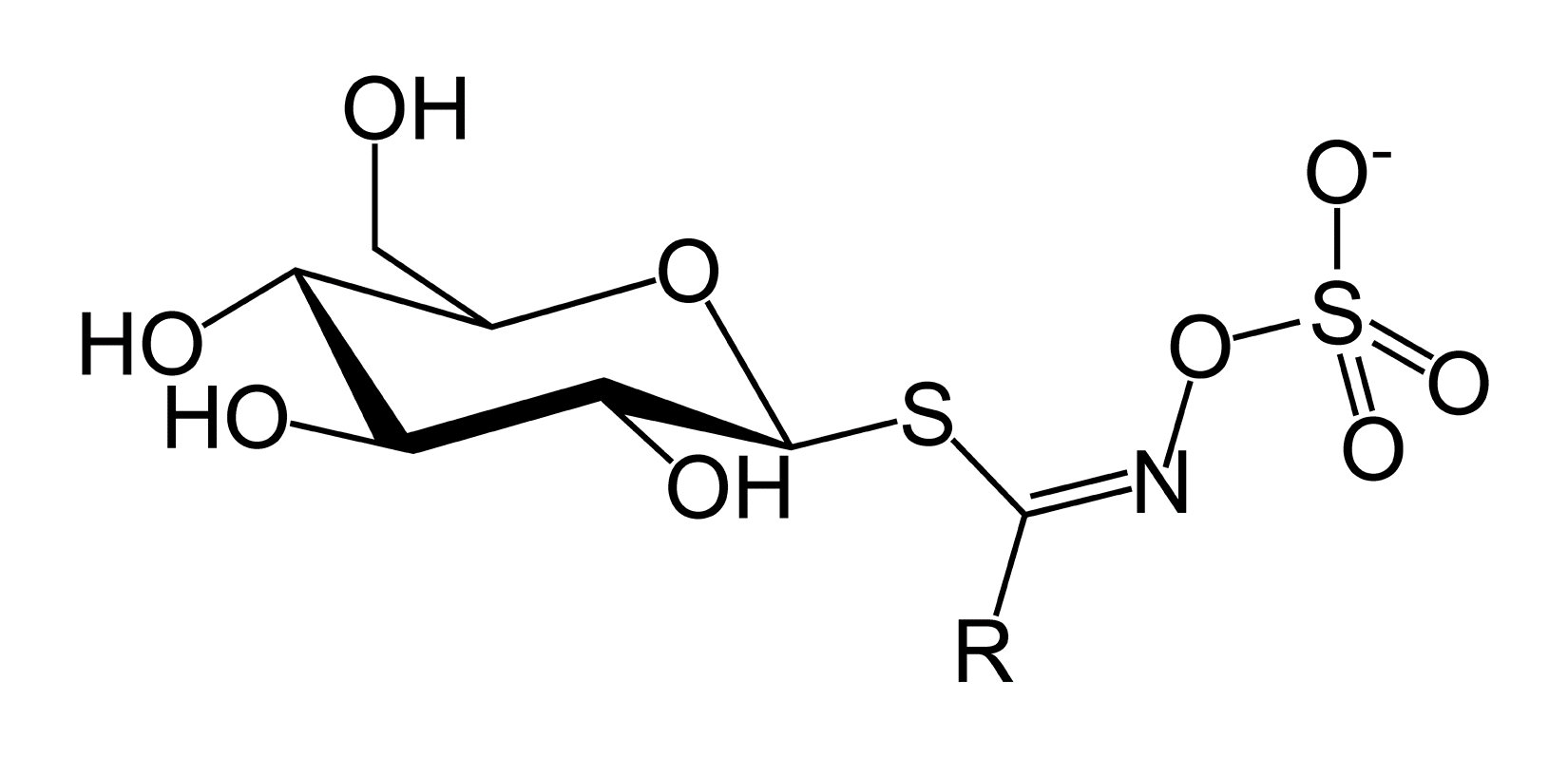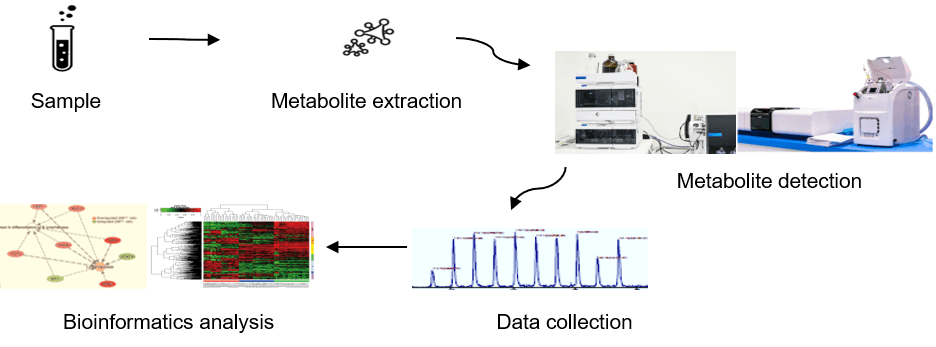Glucosinolates are important secondary metabolites in cruciferous vegetables. They are found in a variety of edible plants such as cabbage, Brussels sprouts, watercress, horseradish, spiny bergamot, and radish. These natural chemicals may help plants resist pests and diseases and give cruciferous vegetables their distinctive flavor.
Glucosinolates are readily hydrolyzed by the action of endogenous mustard enzymes to produce degradation products. The formation of these products is influenced by pH and certain ions and has different physiological functions. Allyl isothiocyanate is a component that produces the characteristic aromatic odor of cruciferous vegetables such as mustard and cabbage. Indole glucosinolates, such as 3-indole methyl glucosinolate, produce compounds such as indole 3-methanol and indole-3-acetonitrile by enzymatic digestion. These compounds are biologically active and can inhibit the growth of microorganisms and have deterrent effects on certain insects and herbivores. 4-Methylthiooxybutyl glucosinolate degradation product, radish sulfur, is the most powerful enzyme inducer found so far and can inactivate oncogenes.
Creative Proteomics offers metabolomics services based on LC-MS technology, which enables qualitative and quantitative analysis of glucosinolates.
 Glucosinolate structure (side group R varies)
Glucosinolate structure (side group R varies)
Glucosinolates Analysis in Creative Proteomics
Sample Preparation: Efficient extraction and purification of glucosinolates from various sample types, ensuring high-quality and reliable results.
Quantitative Analysis: Accurate determination of glucosinolate levels using advanced analytical techniques, such as high-performance liquid chromatography (HPLC) or liquid chromatography-mass spectrometry (LC-MS).
Identification of Glucosinolate Types: Profiling of different glucosinolate compounds to understand the specific types present in the sample. This includes major glucosinolates found in cruciferous vegetables like broccoli, cauliflower, and cabbage.
Data Interpretation: Thorough analysis and interpretation of the obtained data, including concentration levels, identification of individual glucosinolates, and comparison with known standards.
Customized Reporting: Generation of comprehensive reports that include detailed information about the glucosinolate composition in the analyzed samples. Our reports are designed to be clear and easily interpretable.
Quality Assurance: Implementation of rigorous quality control measures to ensure the reliability and reproducibility of results. Our processes adhere to industry standards, and we prioritize precision and accuracy in every analysis.
Analysis List of Glucosinolates
※ The project items are constantly being updated, not only those listed, please contact us to get more latest information and related information.
Glucosinolates Detection Platform
- LC-MS/MS
Waters ACQUITY UPLC, MS-SCIEX QTRAP 4500/5500/6500 and Waters Xevo TQ-S
- GC-MS
Agilent 7890B-5977A, Thermo TRACE 1300-TSQ 9000
Technical Route of Targeted Metabolomics of Glucosinolates

Advantages of Glucosinolate Assay
- Extensive testing items
With rich project experience, Creative Proteomics has completed metabolic studies of hundreds of specie. - Personalized experimental program
With a wealth of project analysis cases, suitable analysis solutions can be selected according to project needs to ensure accurate results. - Professional testing and analysis capabilities
Strict quality control system combined with high performance liquid chromatography-mass spectrometry system, as well as professional data preprocessing and analysis capabilities, to ensure the reliability and accuracy of data. - Excellent high-throughput qualitative and quantitative capabilities
The high-resolution system combined with a rich standard library can simultaneously realize the absolute quantification of a variety of endogenous metabolites.
Service Process

Case: Development of an RP-UHPLC-ESI-MSn Method for Simultaneous Analysis of Glucosinolates (GSLs) and Isothiocyanates (ITCs)
Background
The study aimed to establish a robust analytical method for simultaneous quantification of various GSLs and NAC-ITCs using RP-UHPLC-ESI-MSn. GSLs, found in Brassicaceae plants, undergo enzymatic hydrolysis to form ITCs, crucial bioactive compounds. The existing method by Pilipczuk et al. was modified for enhanced sensitivity and extended applicability to polar GSLs. This method enables real-time monitoring of enzymatic hydrolysis in plant extracts, providing valuable insights into the conversion process.
Technical Methods
Calibration Curves:
- Calibration series for 14 GSLs and 15 ITCs prepared, ranging from 2 μM (GSLs) to 60 μM (ITCs).
- Concentration plotted against NI-MS chromatographic peak area.
- Linearity assessed through the coefficient of determination (R2).
Limits of Detection and Quantification:
- LOD determined from calibration curves using the RMSE approach.
- LOQ calculated according to Pilipczuk et al. and FDA methods.
- LOD and LOQ values presented, ensuring method sensitivity.
Precision:
- Intraday and interday precision evaluated for standard mixtures (14 GSLs, 15 ITCs) and spiked extracts.
- Precision expressed as % RSD of NI-MS chromatographic peak areas.
- Overall precisions computed using appropriate formulas.
Recovery:
- Recovery assessed by analyzing Brassicaceae seed extracts spiked with GSLs and ITCs.
- Recovery (%) calculated using measured, unspiked, and true concentrations.
- FDA criteria (80–110%) applied for recovery assessment.
Results
Linearity of Calibration Curves:
- Regression analysis results listed for 14 GSLs and 15 ITCs.
- High linearity observed (R2 ≥ 0.994) for GSL (2–60 μM) and ITC (3–60 μM) calibration curves.
Limits of Detection and Quantification:
- LOD values for GSLs and ITCs within 0.4–2.6 μM range.
- LOQ values for GSLs and ITCs within 1.2–7.8 μM range.
- Method demonstrated higher sensitivity than alternative methods.
Precision:
- Intraday and interday precisions presented for standard mixtures and spiked extracts.
- Precisions for GSLs and ITCs generally complied with FDA requirements.
Recovery:
- GSL and ITC recoveries ranged from 66 ± 8 to 122 ± 15%, complying with FDA requirements.
- Method well-suited for quantifying various GSLs and ITCs in complex plant extracts.
Reference
- Andini, Silvia, et al. "Simultaneous analysis of glucosinolates and isothiocyanates by reversed-phase ultra-high-performance liquid chromatography–electron spray ionization–tandem mass spectrometry." Journal of agricultural and food chemistry 68.10 (2020): 3121-3131.


 Glucosinolate structure (side group R varies)
Glucosinolate structure (side group R varies)






